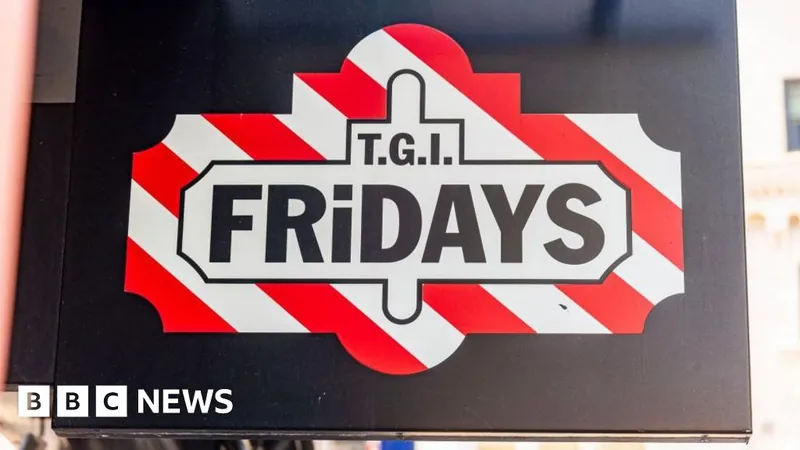
Drug Overdose Rates Drop in 40 States – Is It Cause for Celebration or Alarm?
2024-10-07
Author: Lok
In a surprising turn of events, drug overdose rates have significantly declined in 40 states across the U.S. for the first time in decades. This drop comes as a relief amid a crisis that has gripped the nation for years, with national overdose deaths declining roughly 10 percent from over 112,000 in the previous year to about 101,000 in the year ending April 2024.
State-Wise Performance
Leading the charge in this positive trend are North Carolina and Nebraska, which reported staggering declines of 23 percent and 30 percent, respectively. However, not all states shared in this decline; Alaska experienced a shocking 42 percent increase in overdose deaths, potentially due to its remote areas having limited access to treatment.
Factors Behind the Decline
Experts attribute this national decrease to a few key factors, including improved access to life-saving medications such as buprenorphine and Narcan, combined with a robust public health campaign highlighting the deadly dangers of fentanyl. Dr. Rahul Gupta, head of the White House Office of National Drug Control Policy, remarked to the Washington Post that the decreasing numbers are the result of concerted efforts and not simply coincidental.
Impact of COVID-19
The COVID-19 pandemic played a significant role in the overdose crisis, with many individuals losing access to in-person counseling and medication-assisted treatments during lockdowns. The ensuing isolation likely contributed to increased cravings amid rising mental health issues. In 2019, overdose deaths totaled about 72,000, but the numbers surged in subsequent years, peaking at approximately 111,000 in 2022 before seeing the latest decline.
States with Significant Improvements
States heavily impacted by opioid addiction showed significant improvements. Vermont, for instance, recorded a 19.4 percent decrease, followed closely by Ohio and Pennsylvania. While the Midwest found some glimmers of hope, the western states bore the brunt of deteriorating conditions. Notably, Oregon and Nevada witnessed notable increases in overdose deaths as well.
Public Awareness and Behavioral Changes
Austin Wynn, director of Never Alone Recovery, asserts that public awareness about the risks of fentanyl has led to behavioral changes among drug users. He emphasized, "The likelihood of dying from any illicit street drug now is at least ten times greater than it was a few years ago." This alarming reality, combined with sensational reports of drug-related incidents—like the dangerous trend of fentanyl-laced marijuana—has sparked significant concern among families and advocates alike.
Healthcare Efforts in Addiction Treatment
Healthcare professionals are stepping up their efforts to combat addiction. With the rise in prescriptions for medications designed to curb cravings—including buprenorphine and suboxone—the landscape of addiction treatment is transforming. Between 2016 and 2021, buprenorphine prescriptions surged by 36 percent, and the number of prescribing doctors increased by 86 percent.
Role of Narcan in Overdose Reversal
Moreover, Narcan, the opioid overdose reversal drug, has emerged as an essential tool. It has already saved approximately 27,000 lives since its availability without a prescription in March 2023. This rapid-acting nasal spray has become widely accessible, appearing in venues from schools to nightclubs.
Caution Against Complacency
However, experts caution that the declining numbers could mask a more profound issue. Dr. Caleb Banta-Green, an addiction specialist, proposed a chilling theory: the high lethality of fentanyl could lead to its "self-extinguishment," as fewer users mean fewer deaths. Yet, Wynn warns that this theory oversimplifies the situation and could encourage risky behavior among those who may perceive reduced danger.
Conclusion and Future Outlook
The reality is complex, and as we see progress in the fight against overdoses, it remains crucial to maintain vigilance. The potential for increasing drug use amid lower fatality rates presents a dangerous scenario that could reverse recent gains. As communities navigate this landscape, the ongoing public health campaign and accessible treatment options will be more vital than ever.
Will the recent drop in overdose deaths lead to lasting change, or is it a sign of something more ominous? Only time will tell as we continue to confront the realities of addiction and its deadly consequences.




 Brasil (PT)
Brasil (PT)
 Canada (EN)
Canada (EN)
 Chile (ES)
Chile (ES)
 España (ES)
España (ES)
 France (FR)
France (FR)
 Hong Kong (EN)
Hong Kong (EN)
 Italia (IT)
Italia (IT)
 日本 (JA)
日本 (JA)
 Magyarország (HU)
Magyarország (HU)
 Norge (NO)
Norge (NO)
 Polska (PL)
Polska (PL)
 Schweiz (DE)
Schweiz (DE)
 Singapore (EN)
Singapore (EN)
 Sverige (SV)
Sverige (SV)
 Suomi (FI)
Suomi (FI)
 Türkiye (TR)
Türkiye (TR)